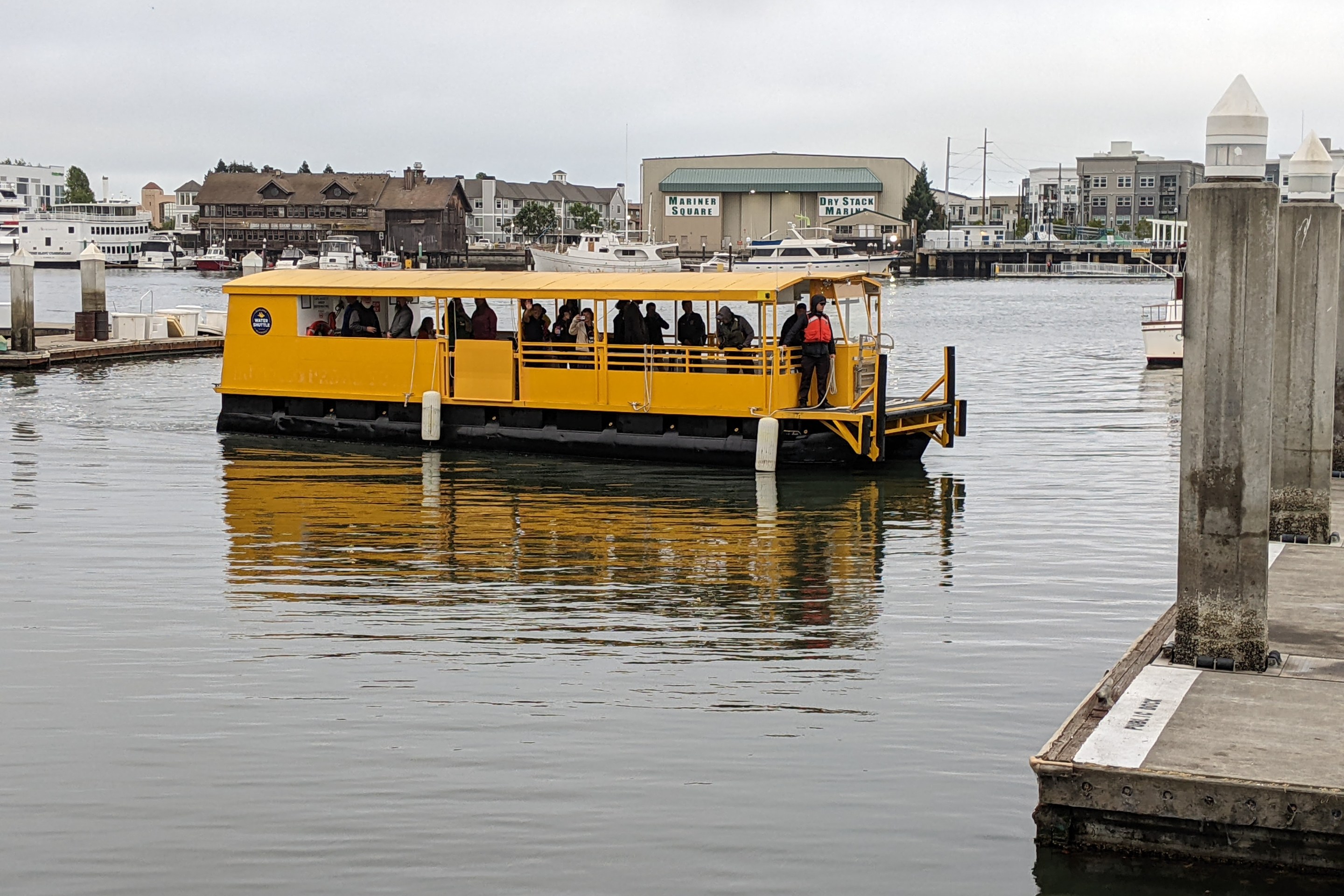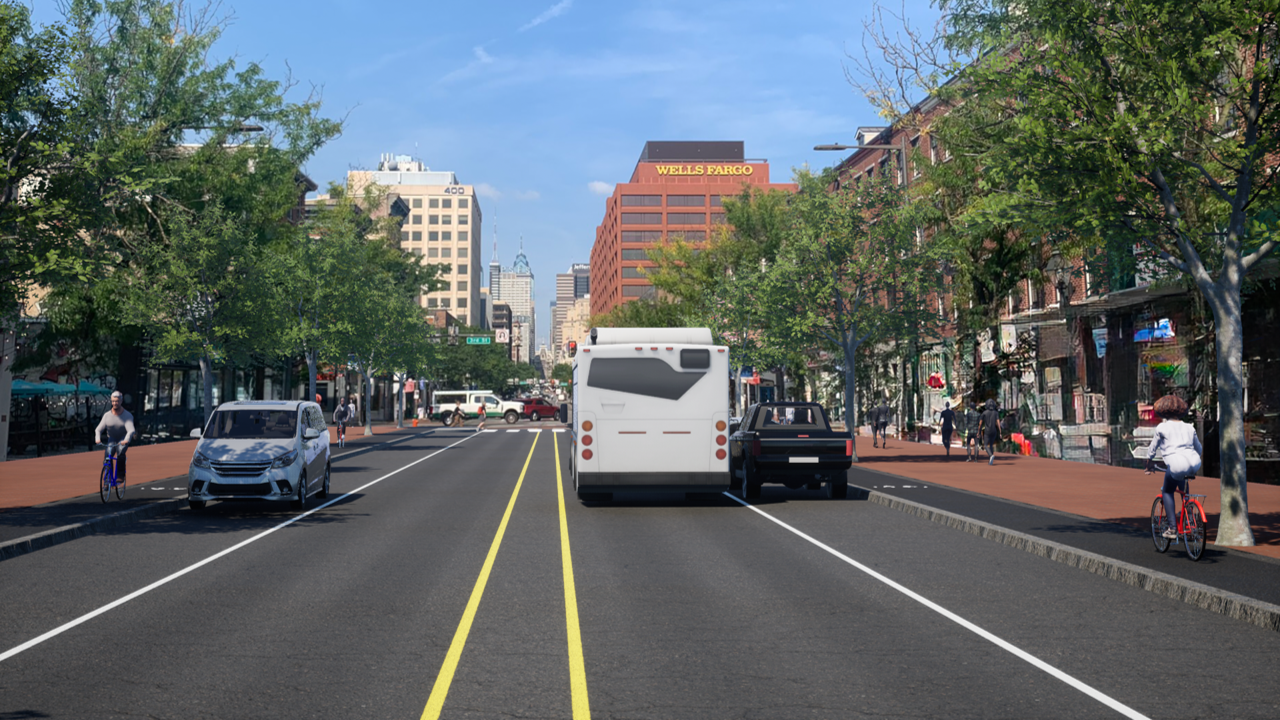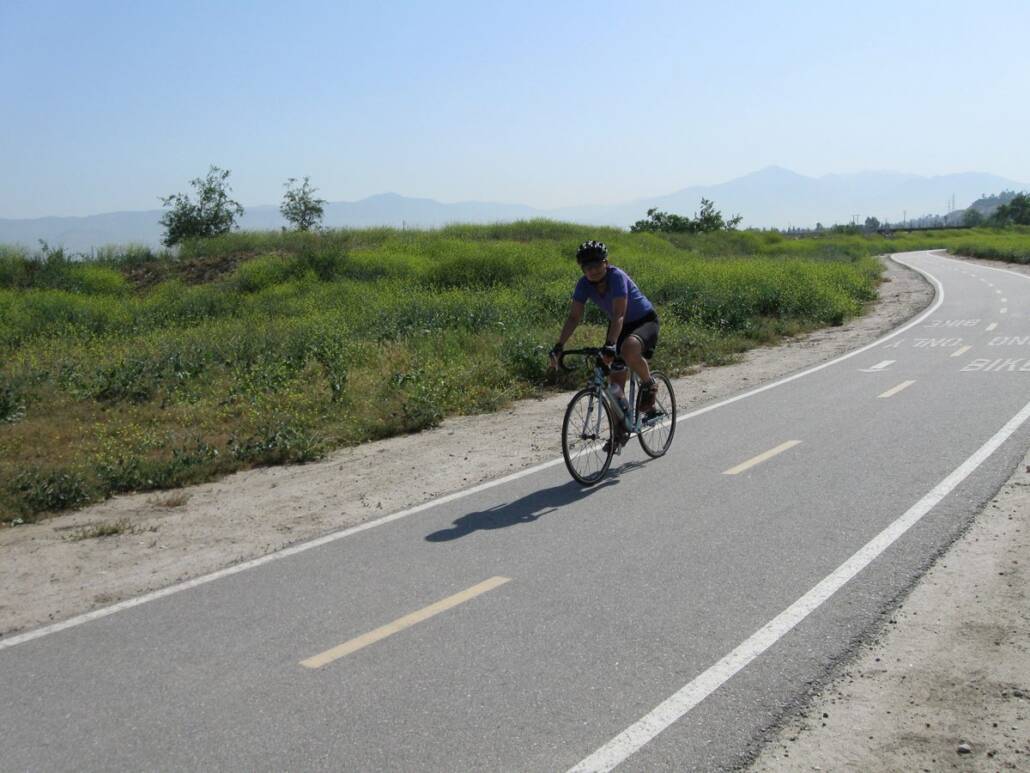 A Sunday Stroll on International Boulevard, Flickr photo by madpai
A Sunday Stroll on International Boulevard, Flickr photo by madpai How would you define the boundaries of your neighborhood? Is it the streets that describe it? Is it the people who live in it, a cultural or demographic group that you belong to, or that excludes you? Do you think your neighbors would describe your neighborhood the same way you do?
I live on Mission Street, a few blocks south of Cesar Chavez, on the side of the street that the Post Office includes in its Bernal Heights boundary. If I tell people I live in Bernal Heights, most assume I'm up on Cortland Street in the commercial center of Bernal Heights, a fifteen minute walk. If I say Mission, they assume the area north of Cesar Chavez between 24th Street and 14th Street, a 10 to 20 minute walk. No one knows what I mean if I say Precita Valley. Inevitably, I just say I live across the street from the bar El Rio and most people know exactly where I am.
Berkeley landscape architecture graduate student Robert Lemon was recently awarded the Landscape Architecture Foundation's Dangermond Fellowship to examine questions of neighborhood identity in the Oakland districts of Fruitvale, West Oakland, and Chinatown. He's hoping the information he gathers will inform city planners and politicians not only about how members of a community define themselves, but ways the city can improve the neighborhood according to those geographic and cultural identities.
Mapping Oakland is based on previous experience Lemon had as a planner in Columbus, Ohio, and research he did for a Berkeley class on the relocation of the I-880 in West Oakland after the 1989 Loma Prieta earthquake destroyed a section of it.
Lemon has completed most of the survey work he intends to collect and is now filtering through the data for patterns, which he expects will vary by demographic and cultural subsets. Lemon and a Berkeley counterpart will create GIS maps to give a visual
representation to the dynamics of those neighborhoods. He explained
that three respondents will have three different perspectives on the
boundaries of a neighborhood and, using GIS, he will map the errors of disagreement among all respondents. If a block
within a neighborhood is repeatedly excluded from the boundaries, he
wants to know which that is and why it is defined the way it is.
 Shopping in Oakland Chinatown, Flickr photo by Old Jingleballicks
Shopping in Oakland Chinatown, Flickr photo by Old JingleballicksLemon said that in areas lacking cultural enclaves, it's difficult to determine the boundaries of a neighborhood, if not for physical elements like streets. In other cases, streets can divide a relatively homogeneous demographic and cultural group. He described gated communities as the epitome of neighborhoods circumscribed by physical boundaries, where someone greets you at the gate every time you leave and return. In cities, with less controlled demarcation and development chronology, the differences can be much more difficult to define.
"The reason we study what makes humans interesting is because they never think the way you assume they will," he said.
In Fruitvale, for instance, Lemon said that most of his respondents were Mexican immigrants who identify the boundaries of their neighborhood by referring to two streets, Fruitvale Avenue and International Boulevard. Respondents south of Fruitvale Avenue identify their neighborhood as the area southeast of Fruitvale and International, while respondents north of Fruitvale Avenue said that their neighborhood was to the northeast of both streets. None of the respondents to his surveys consider BART's Fruitvale transit village to be "Fruitvale" (Lemon did not survey residents of the transit village, who he said might define their neighborhood much differently).
In West Oakland, preliminary data show that many residents of the section of the neighborhood to the west of Mandela Parkway who were previously circumscribed by the elevated freeway still consider their neighborhood to be the "real" West Oakland, despite twenty years without a physical boundary separating them from their neighbors to the east.
In addition to the maps, Lemon expects to analyze a number of other important signifiers that inform neighborhoods. As a trained planner and human geographer, he is very interested in how residents in various neighborhoods experience public space, and thus his survey questions seek to discover why, for instance, public parks in West Oakland are not often used as social spaces by residents there (the general feeling is they are unsafe, other meeting places on streets and near businesses), or why Chinatown residents prefer busy sidewalks and socializing on the street over meeting in parks (cultural traditions and nostalgia from busy cities in China, traditional dance and ritual performed on hard, even surfaces, not on grass).
The results of Lemon's surveys will be compiled this year and presented at a September conference of the American Society of Landscape Architects, though he said he expected a future Berkeley graduate student will perform a similar study in a few years to track changes in the neighborhoods. The data for the survey is not meant to be prescriptive, though the planner in him had a hard time halting at analysis.
In Oakland Chinatown, he said that most respondents liked the crowded conditions on the sidewalks, which they said reminded them of home, and didn't think widening the sidewalks was a priority. Lemon suggested that Oakland could widen the sidewalks, taking up some or all of one of the underutilized vehicle lanes, then design in physical elements to the sidewalk that would re-create a slowing effect. He suggested that the City of Oakland could grant permits that allow vendors to move their wares further into the widened sidewalks and could create sitting areas and planters that would break up the newly enlarged area to encourage and enrich the social activities that currently occur there.
Businesses and residents of Oakland Chinatown had previously banded together to use federal and state grants to redefine several pedestrian and streetscape features along four blocks there, including stylized crosswalks, signage, and pedestrian wayfinding. A short history of that project can be found here.
Like efforts in Los Angeles to define and map neighborhoods, Lemon said there is often disagreement over what exactly a neighborhood is. After City Homestead, a West Oakland blog, wrote about Mapping Oakland and readers began to compare notes online, they discovered there was some disagreement about what constituted West Oakland. Some were quite upset when their friends and neighbors disagreed with their own neighborhood boundaries.
"People aren't happy when their neighbors don't agree with the boundaries of the neighborhood," said Lemon. "It's some psychological issue there; we don't want to be the one that is different."
Lemon said some of the survey respondents, especially among those were were white and had completed graduate eduction, were concerned that he didn't include maps with the survey questions. He heard comments such as "I wish it had a map so I could look at my boundaries," or " I had to go get a map" to compete the surveys. Others added comments like, "I hope I got all the answers right," or "Now you can tell me how wrong my perceptions are."
"There's no right or wrong with people's perceptions," said Lemon. "But we as policy makers and designers want to understand how people use space."
Though new surveys won't make it into the current study, interested readers can take the survey here for inclusion in later work.





